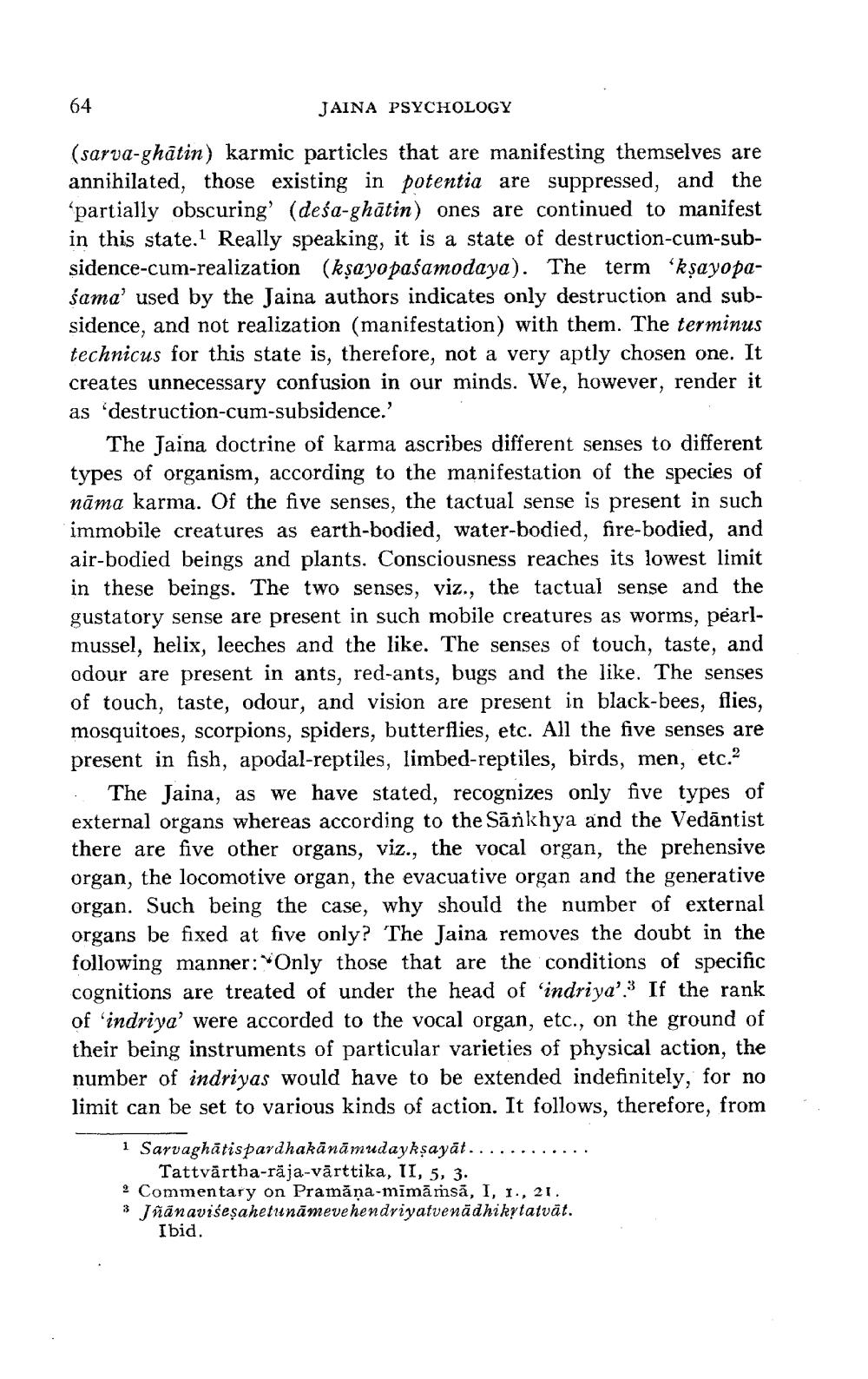________________
64
JAINA PSYCHOLOGY
(sarva-ghatin) karmic particles that are manifesting themselves are annihilated, those existing in potentia are suppressed, and the 'partially obscuring' (deśa-ghatin) ones are continued to manifest in this state. Really speaking, it is a state of destruction-cum-subsidence-cum-realization (kṣayopaśamodaya). The term 'kṣayopasama' used by the Jaina authors indicates only destruction and subsidence, and not realization (manifestation) with them. The terminus technicus for this state is, therefore, not a very aptly chosen one. It creates unnecessary confusion in our minds. We, however, render it as 'destruction-cum-subsidence.'
The Jaina doctrine of karma ascribes different senses to different types of organism, according to the manifestation of the species of nāma karma. Of the five senses, the tactual sense is present in such immobile creatures as earth-bodied, water-bodied, fire-bodied, and air-bodied beings and plants. Consciousness reaches its lowest limit in these beings. The two senses, viz., the tactual sense and the gustatory sense are present in such mobile creatures as worms, pearlmussel, helix, leeches and the like. The senses of touch, taste, and odour are present in ants, red-ants, bugs and the like. The senses of touch, taste, odour, and vision are present in black-bees, flies, mosquitoes, scorpions, spiders, butterflies, etc. All the five senses are present in fish, apodal-reptiles, limbed-reptiles, birds, men, etc.2
The Jaina, as we have stated, recognizes only five types of external organs whereas according to the Sankhya and the Vedantist there are five other organs, viz., the vocal organ, the prehensive organ, the locomotive organ, the evacuative organ and the generative organ. Such being the case, why should the number of external organs be fixed at five only? The Jaina removes the doubt in the following manner: Only those that are the conditions of specific cognitions are treated of under the head of 'indriya'. If the rank of 'indriya' were accorded to the vocal organ, etc., on the ground of their being instruments of particular varieties of physical action, the number of indriyas would have to be extended indefinitely, for no limit can be set to various kinds of action. It follows, therefore, from
Sarvaghatispardhakānāmudaykṣayāt...
Tattvärtha-räja-värttika, II, 5, 3.
2 Commentary on Pramana-mimāṁsã, I, 1., 21.
* Jñanaviseṣahetunameve hendriyatvenädhikṛtatvät.
Ibid.
1




